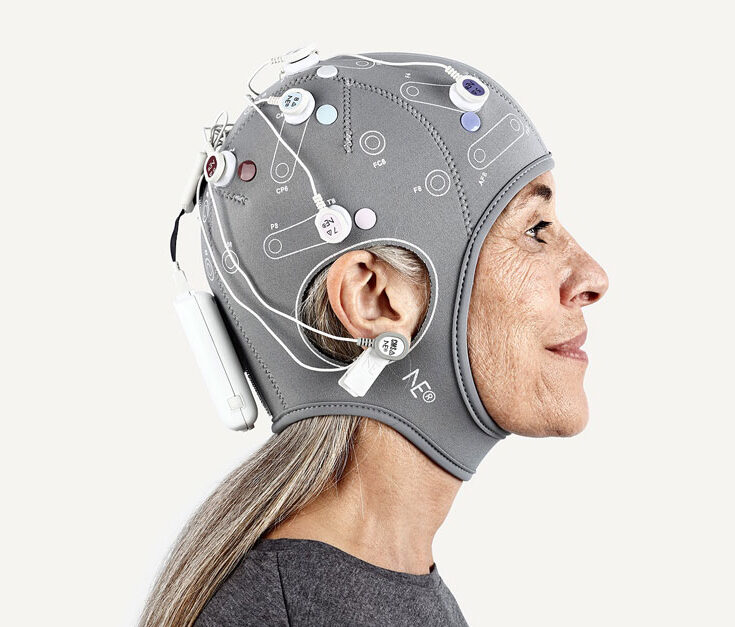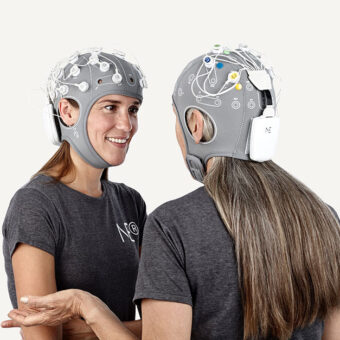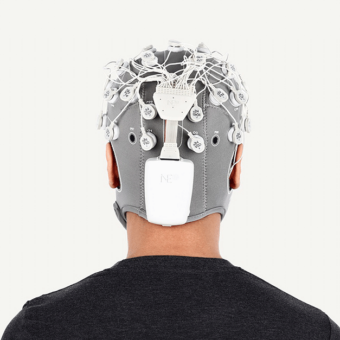Traumatic Brain Injury (TBI) remains a significant public health concern, often referred to as a silent epidemic due to its high incidence and potential for causing long-term disability. March marks Brain Injury Awareness Month, a crucial time to highlight the indispensable role of the Electroencephalogram (EEG) in the diagnosis and understanding of Traumatic Brain Injury (TBI). EEG, by recording the electrical activity of the brain, offers invaluable insights into the complexities of TBI, helping medical professionals make accurate diagnoses and tailor treatment plans to individual needs.
The Diagnostic Power of an EEG in TBI
EEG has become indispensable in diagnosing TBI, thanks to its ability to detect abnormalities in brain wave patterns. A common finding when analyzing the EEG of a person with TBI is focal slowing. This phenomenon affects both the white and gray matter of the brain, indicating that the posterior dominant rhythm is slower and there is a slowing of the diffuse theta.
Supplementing an EEG with Other Diagnostic Tests for TBI
While an EEG is crucial, it typically forms part of a broader diagnostic process for TBI. If an EEG suggests TBI, several other tests may be conducted, including:
- Glasgow Coma Scale: A simple test assessing the severity of the injury.
- CT Scans: Provide detailed images of the brain, revealing swelling, bruising, or blood clots.
- MRIs: Offer detailed images using magnets and radio waves, used when symptoms persist or do not improve.
- Intracranial Pressure Monitor: Measures skull pressure, which can increase due to TBI-related swelling.
Understanding TBI: Symptoms, Causes, and Treatment
TBI can range from mild to severe, with symptoms varying accordingly. Mild TBI may result in headaches, dizziness, confusion, and changes in sleep patterns, among others. Conversely, moderate to severe Traumatic Brain Injury can lead to more severe symptoms like seizures, repeated vomiting, and loss of coordination. Causes of TBI are varied, including falls, motor vehicle crashes, sports injuries, and physical assaults.
Treatment of TBI
The treatment for TBI depends on the injury’s severity. Mild injuries often require rest and over-the-counter medications for headaches. However, moderate to severe injuries might need more active treatment, including medications, rehabilitation therapies, and possibly surgery.
The Role of EEG in TBI Research
Research has emphasized the importance of EEG findings in TBI. Studies have shown that after a TBI, EEG often reveals a slowing of the posterior dominant rhythm and increased diffuse theta slowing. However, these EEG abnormalities are not uniform across all Traumatic Brain Injuries, highlighting the need for a nuanced approach to diagnosis and treatment.
The Promise of Quantitative EEG (qEEG) in TBI
Quantitative EEG (qEEG), which involves digital recording and analysis, shows promise in diagnosing and prognosticating mild Traumatic Brain Injuries. Although qEEG appears promising for these purposes, further research is essential to validate and refine its use in clinical settings.
Machine Learning Methodologies
Machine learning (ML) methodologies offer powerful tools for analyzing the vast amounts of data generated by wearable EEG devices. By applying ML algorithms, researchers and clinicians can identify patterns and signatures in EEG data that correlate with TBIs, enhancing both the accuracy and speed of diagnosis.
- Applications:
- Pattern Recognition: ML algorithms can detect subtle changes in EEG signals that may indicate the presence of a Traumatic Brain Injury, even when traditional analysis methods might miss these abnormalities.
- Predictive Analytics: Leveraging historical data, ML models can predict outcomes and recovery trajectories for individuals with TBIs, informing personalized treatment plans.
- Automated Diagnostics: The automation of EEG data analysis through ML can reduce the time and expertise required to diagnose TBIs, potentially enabling more widespread screening and early detection.
Integrating Wearable EEG and Machine Learning
The integration of wearable EEG technologies with machine learning methodologies offers a comprehensive approach to the detection and management of TBIs. This synergy not only enhances diagnostic capabilities but also provides a framework for a more personalized and adaptive treatment strategy.
- Challenges and Considerations:
- Data Privacy and Security: The collection and analysis of EEG data raise significant privacy and security concerns that must be addressed.
- Algorithmic Bias: Ensuring that ML algorithms are unbiased and equitable is crucial to prevent disparities in diagnosis and treatment.
- Clinical Validation: Both wearable EEG technologies and ML algorithms require rigorous clinical validation to ensure their accuracy, reliability, and efficacy in detecting TBIs.
Conclusion
As we mark Brain Injury Awareness Month, recognizing the importance of EEG in the early diagnosis and management of Traumatic Brain Injuries is essential. Early detection through EEG can significantly influence the treatment approach, recovery time, and overall outcome for individuals with TBI.
Our devices, tailored for diagnostic excellence, can play a supportive role in both the diagnostic and recovery processes of TBI, enhancing patient care and treatment outcomes. For more information or to schedule a demo, contact us today.
Reference
- Traumatic brain injury: An EEG point of view by Jéssica Natuline Ianof and Renato Anghinah, published in the University of São Paulo Medical School Journal.



